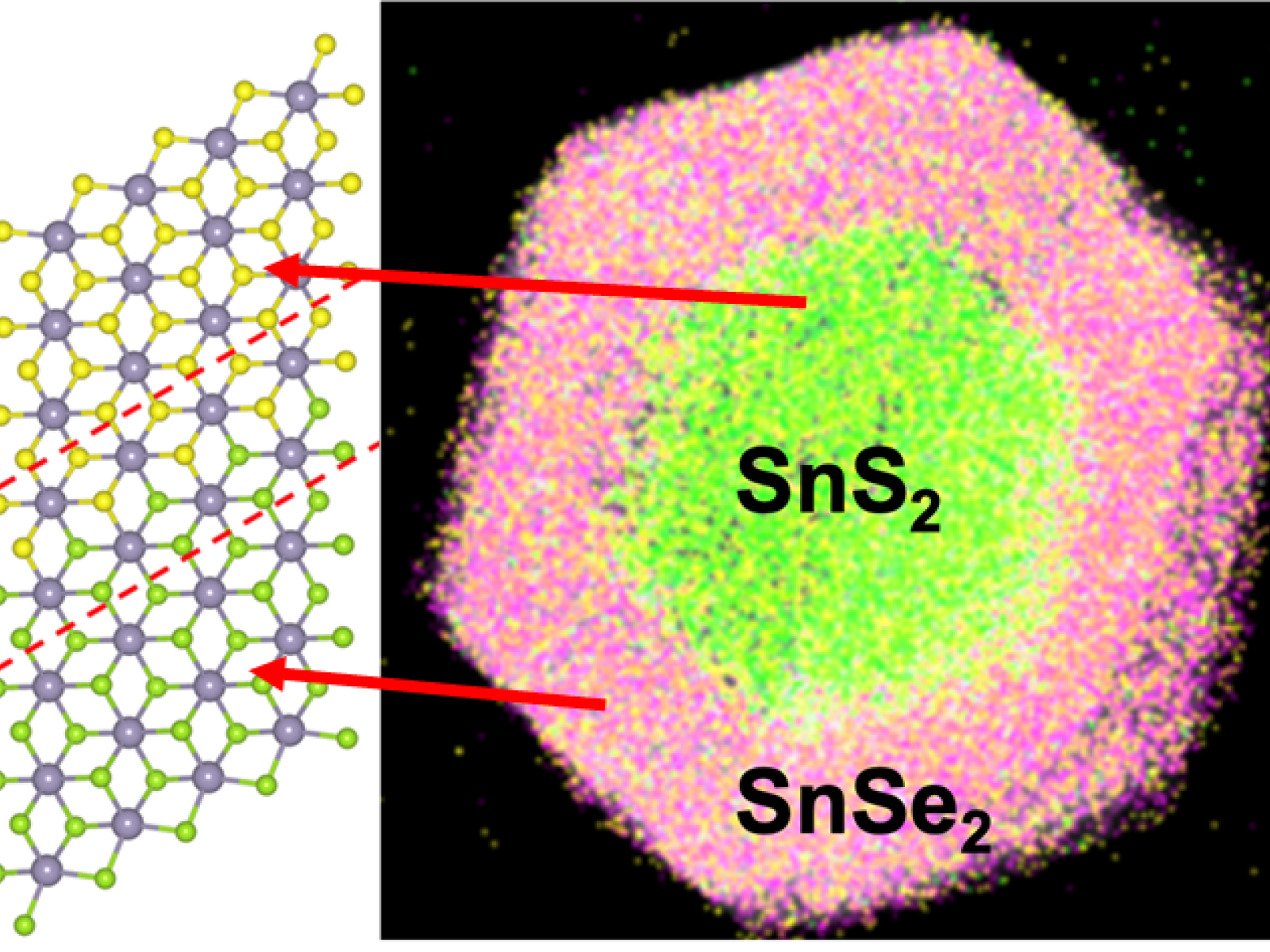2025-06-06 パシフィック・ノースウェスト国立研究所 (PNNL)

The interface between the crown and core of a tin-based heterostructure controls the material’s electronic properties.
(Image by Lili Liu and Duo Song | Pacific Northwest National Laboratory)
<関連情報>
- https://www.pnnl.gov/publications/generalized-strategy-synthesizing-2-d-core-crown-heterostructures
- https://onlinelibrary.wiley.com/doi/full/10.1002/smll.202410526
ポリビニルピロリドンを用いた界面修飾による2次元コアクラウン型SnS2/SnSe2ヘテロ構造のエピタキシャル成長 Epitaxial Growth of 2D Core-Crown SnS2/SnSe2 Heterostructure Through Interfacial Modification with Polyvinylpyrrolidone
Lili Liu, Duo Song, Mitchell E. Kaiser, Jun Liu, James J. De Yoreo, Maria L. Sushko
Small Published: 25 February 2025
DOI:https://doi.org/10.1002/smll.202410526
Abstract
Developing generalized strategies for controlled synthesis of 2D heterostructures remains a significant challenge because the existing approaches often suffer from poor reproducibility and scalability. In this study, a solution synthesis approach for epitaxial core-crown heterostructures with controlled band alignment, that overcomes these challenges is reported. Polyvinylpyrrolidone (PVP) is used as a structure-directing agent to reduce lattice mismatch between SnS2 and SnSe2 (10-10) surfaces and direct epitaxial growth of SnSe2 crown on SnS2 seed. Additionally, PVP adsorption to the basal plane prevents van der Waals stacking and stabilizes 2D heterostructures during synthesis. Driven by interfacial thermodynamics, the formation of the core-crown heterostructure is highly reproducible and the size of the 2D heterostructure and relative areas of the core and the crown can be precisely controlled in a two-step process by varying synthesis times for the seed and the crown. The identified growth pathway for 2D heterostructures can be generalized to other combinations of van der Waals materials to provide a platform for synthesizing micron-size epitaxial heterostructures with a desired electronic structure for catalysis and microelectronics.



